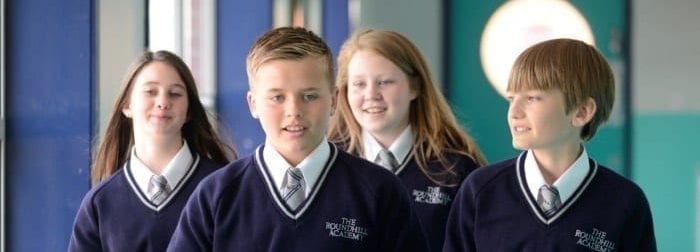ICT and Computing is constantly changing. The development of ICT hardware and software means that students need to be prepared to “incorporate the new” and be prepared for the future and potential careers.
The intent of Roundhill ICT Key stage 3 is to provide and challenge students with the experience of ICT and Computer Science skills.
We do this by focussing on ICT skills with a variety of software within Year 8 and develop analytical thinking with year 9.
Our aim is that this will allow students to face future ICT developments in relation to any career with confidence. The course also prepares students for both Creative Media (ICT) BTEC and Computer Science GCSE if they choose to develop their skills further.
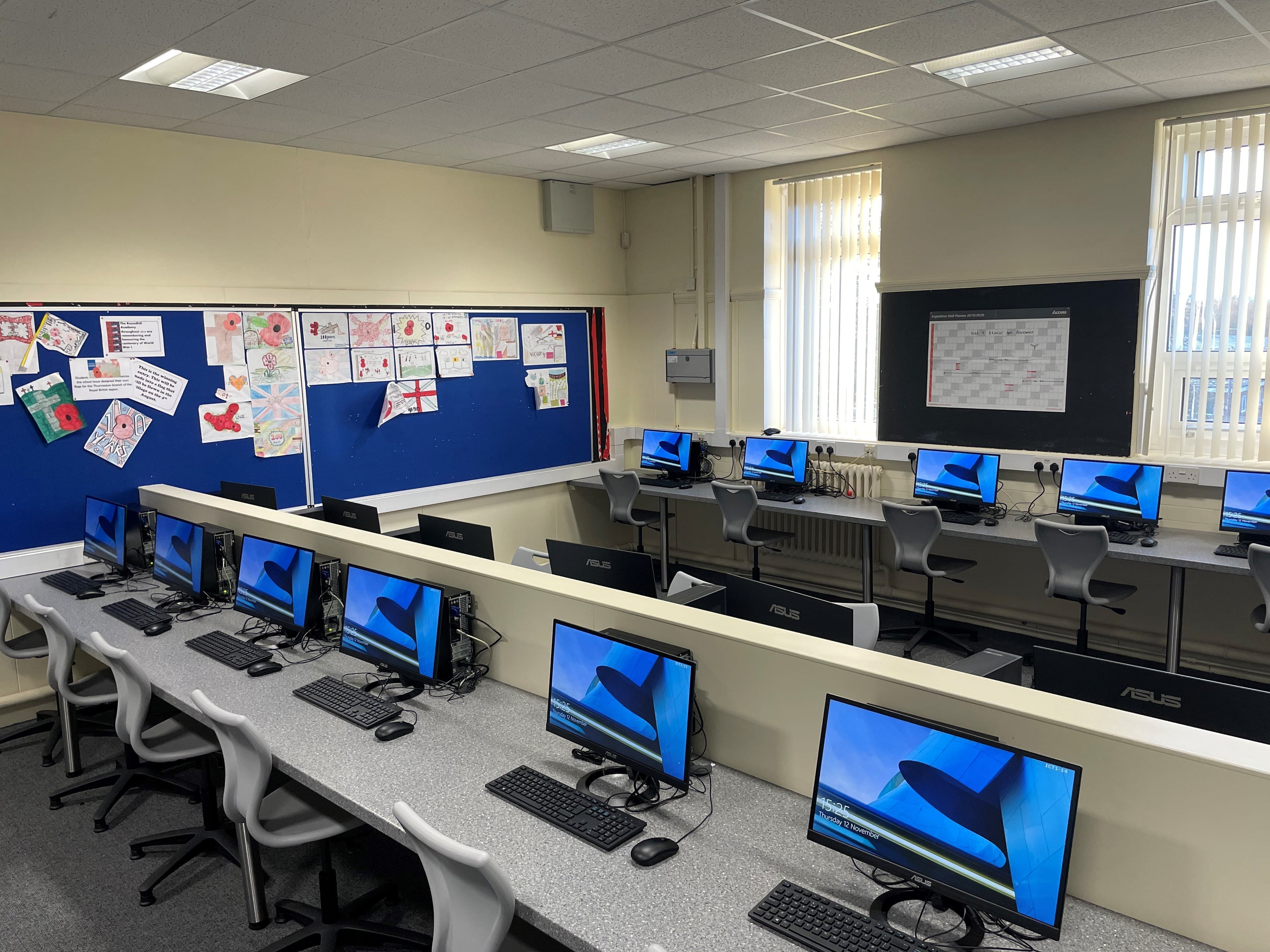
Topics covered in ICT and Computing are detailed below
| Unit 1: Files, Folders, Internet | Basic introduction to using the computer system and how to organise your work and use the internet effectively. |
| Unit 2: Word-processing DTP | Being able to present you work professionally including the use of Desk Top Publishing. You will learn how to present images and text using Microsoft Word to a professional level. |
| Unit 3: Powerpoint game | Learning the skills of PowerPoint presentations whilst also covering aspects to make the presentation more interactive and enjoyable. In this unit you will learn how we create interactive actions based upon a simple game. |
| Unit 4: Vector graphics design | Using Serif DrawPlus, students will learn how vector graphics are constructed and developed. You will learn how to use vector based graphics programs for 2D designs. |
| Unit 5: Photo editing | Using Serif PhotoPlus (software similar to Adobe Photoshop) student will learn how to make and edit photo compositions and utilise photo effects. |
| Unit 1: Vector graphics design | Using Serif DrawPlus, students will learn how vector graphics are constructed and developed. You will learn how to use vector based graphics programs for 2D designs. |
| Unit 2: Photo editing | Using Serif PhotoPlus (software similar to Adobe Photoshop) student will learn how to make and edit photo compositions and utilise photo effects. This topic was brought through from year 8 due to Covid. |
| Unit 3: Hardware and Components | The physical parts of a computer are explained and how they work together. You will learn about the Central Processing Unit, RAM, ROM, Secondary Storage and additional hardware which allows a computer to work |
| Unit 4: GameMaker programming | Students develop programming skills through a graphical interface to develop simple 2D style games. |
| Unit 5: Binary and Logic | Students will learn about how computers work and “think”. You will learn about binary, why computers use binary and how logic circuits are able to perform mathematical functions. |
| Topic 1: Introduction to course | Introduces components to be studied and software packages to be used. |
| Topic 2: Film Studies | Students learn to analyse film and TV including technical vocabulary. You will learn about framing, editing and sound. |
| Topic 3: Audience and purpose | Learning about how media products are focused on particular audience types and how these will be needed for their own media products. |
| Topic 3: Photo editing (post production) | Students have a brief recall of photo editing skills and understand the principals of post production. |
| Topic 4: Desk Top Publishing | Students learn the principals of graphic design and develop their Desk Top Publishing skills for paper based media. |
| Topic 5: Game Making | Students recall and use GameMaker to produce more complex interactive media such as mobile phone games. |
| Topic 6: Film design and production | Students make their own short film following pre-production planning, shooting, editing and post production techniques. |
| Topic 7: Website design | Interactive media utilising website software to create websites. |
| Topic 1: Component 1 | Focuses on the theory side of the course in which students demonstrate their technical understanding of media in Paper, Audio/Visual, and Interactive formats |
| Topic 2: Component 2 | Practical side in which students demonstrate theory practical skills learnt with a portfolio showing all three areas of media (Paper, Audio/visual, Interactive), and then focussing on a “speciality” of their own choice producing a more in depth project of one of the areas of media. |
| Topic 3: Component 3 | Students complete an exam in which they demonstrate their pre-production, and production techniques for their speciality. This is based on a given brief from the examination board and a certain amount of time to develop their ideas and produce their final product. |
| Theory Topics | |
| Topic 1: Introduction to course | What is a computer, and why are they so useful. Where they appear in our daily life. |
| Topic 2: Inside the computer | Students learn about the components the computer and how they function. |
| Topic 3: Simple Binary and Logic Circuits | The first principals of how data is represented in the computer and how a computer is made of electrical circuits. Students will create logical circuits and trace the outcomes. |
| Topic 4: Functions of a CPU | How a CPU follows the Fetch Decode Execute cycle and the components within a CPU and their role. |
| Topic 5: Binary conversion and manipulation and data representation. | Developed from topic 3 students develop their understanding of binary, conversion, and arithmetic and how binary is used to represent text, images and sound. |
| Topic 6: User interfaces | Students learn about different interfaces and develop a simple graphic user interface game. |
| Topic 7: Secondary Storage | Students learn about the different types of storage and there relative merits and disadvantages. |
| Topic 8: Operating Systems | Students learn about the features of an O/S and the processes it controls. |
| Topic 9: Utility software | Different types of software and their uses in maintaining a computer system. |
| Topic 10: Networking 1 | Basic principals of networking. Where students learn how networks are connected and how the information is communicated. |
| Topic 11: Social consequences | Students learn about the ethical, social, and environmental concerns with computers. |
| Topic 12: Security and threats | Possible threats and remedial/preventive action to protect computer and data. |
| Topic 13: sorts and searches | Methods of sorting and searching which computers perform, including algorithms. |
| Practical | |
| Topic 1: Python introduction | Programming in python variables, input and output, data types |
| Topic 2: Python arithmetic | Calculations and arithmetic within programming including logical operations |
| Topic 3: Python branching/Selection | The use of branching constructions to run sections of code (often referred to as IF’s). |
| Topic 4: Python looping/iteration | The use of different looping/iteration methods to solve problems |
| Topic 5: Data structures and their manipulation | Use of more complex structures from string, number, and Boolean types to array and list structures. Introduction to simple file structures. |
| Topic 6: Subprograms | Students learn about libraries, subprograms, functions and procedures. |
| Topic 7: Turtle graphics | Use of turtle graphics module to utilise above skills and produce simple vector graphics. |
| Theory | |
| Topic 1: Binary and Inside the computer | Further recall and development of understanding of the insides of the computer. |
| Topic 2: Networking 2 | Developed from the networking studied in year 10 this topic goes into more depth of protocols, switching and networking methods. |
| Topic 3: Organisation and structure of data | More detailed knowledge of the methods of data storage, transfer and calculations. |
| Topic 4: Ethical/Professional standards | Discuses more in depth the ethical issues of computer use and standards expected within computer professionals. |
| More in depth knowledge of security flaws and methods of prevention. | |
| Topic 5: Security and data management | Detailed understanding of the process of interpretation and compilation of high level and low level code. |
| Topic 6: Program construction and compilation | The current year 11 also study HTML and Greenfoot programming as part of their final year. |
| Practical | Including the design and development of code (pseudocode, flowcharts) |
| Topic 1: Development of year 10 programming | Standard sorts and searches being able to trace, follow and replicate. |
| Topic 2: Standard algorithms | This covers files and their different types such as text, binary, database records and relevant processing. |
| Topic 3: Files and extended data structures | Enabling students to develop code effectively and prepare for the practical examination. |
| Topic 4: Mastery of development |
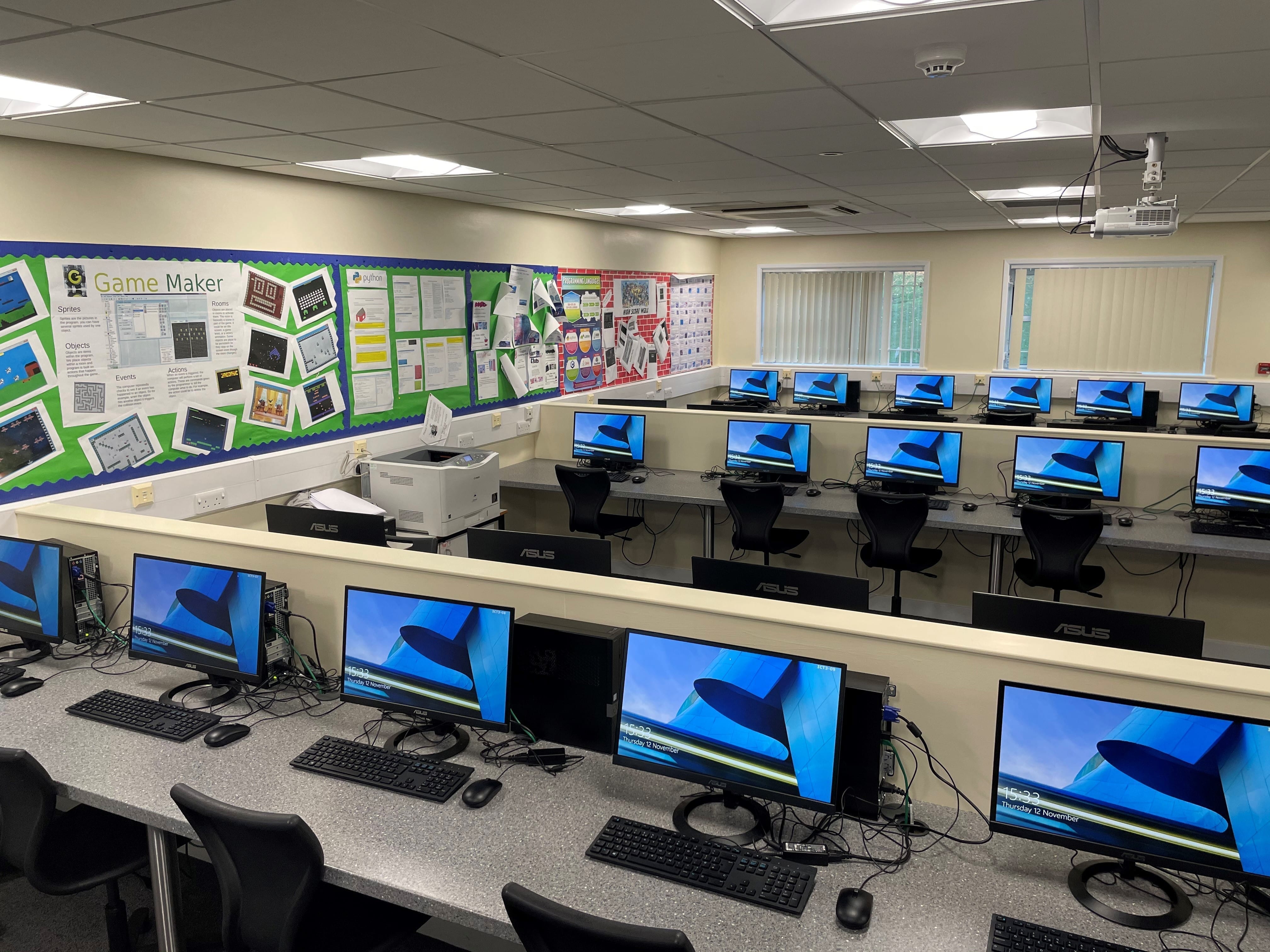
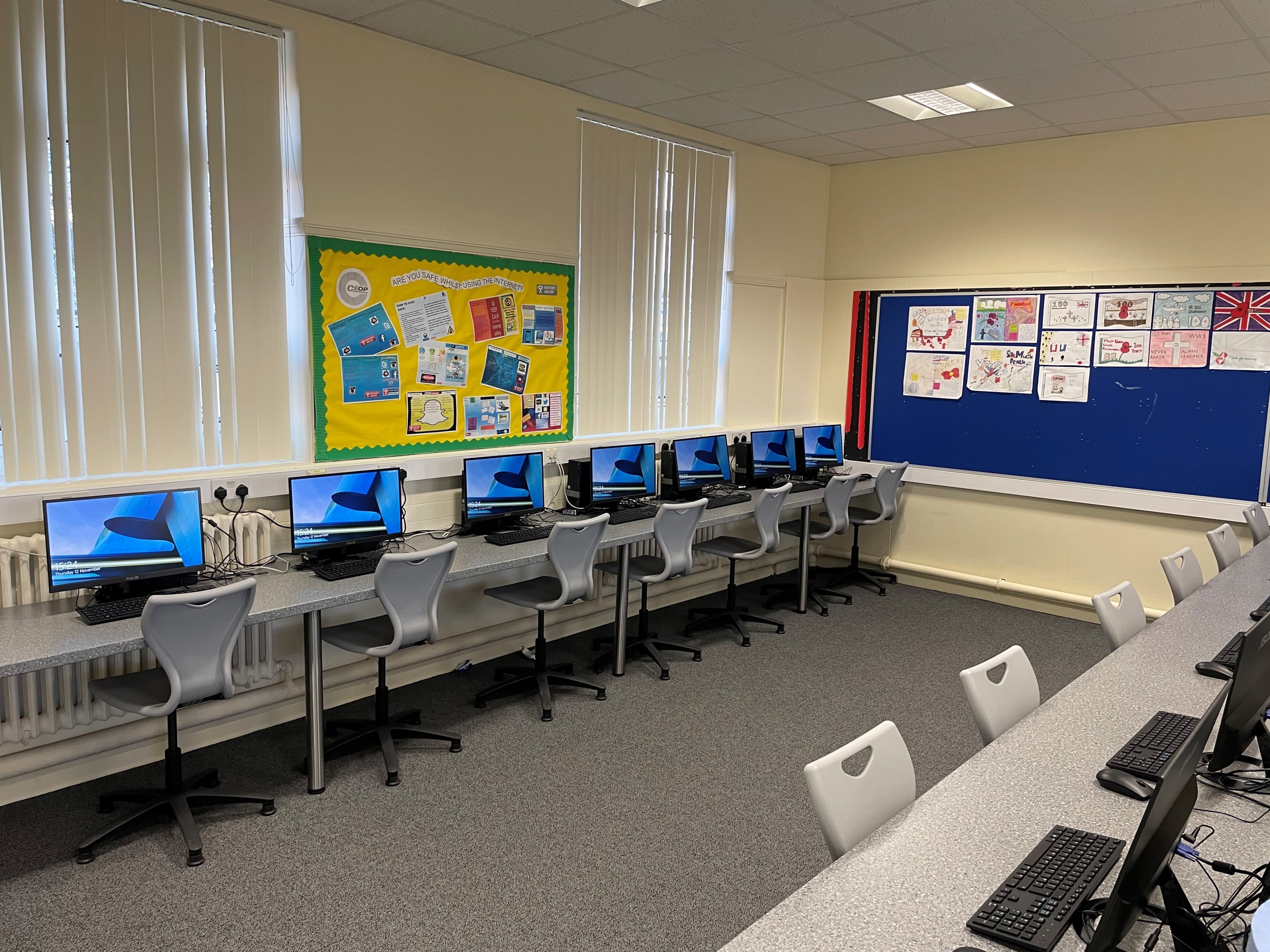
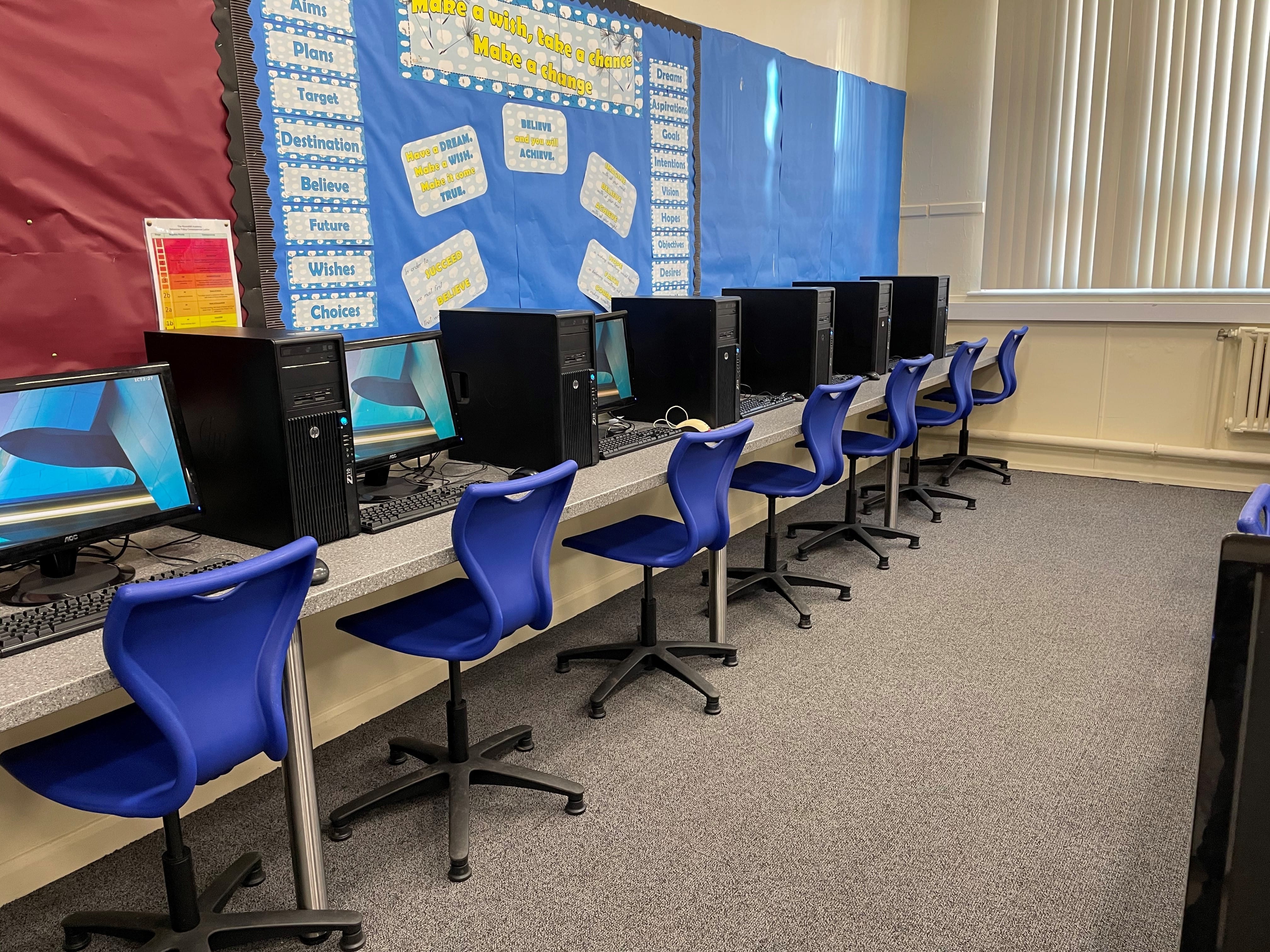
For more information about Computing in the Curriculum contact Paul Meakin. Email pmeakin@roundhill.bepschools.org

